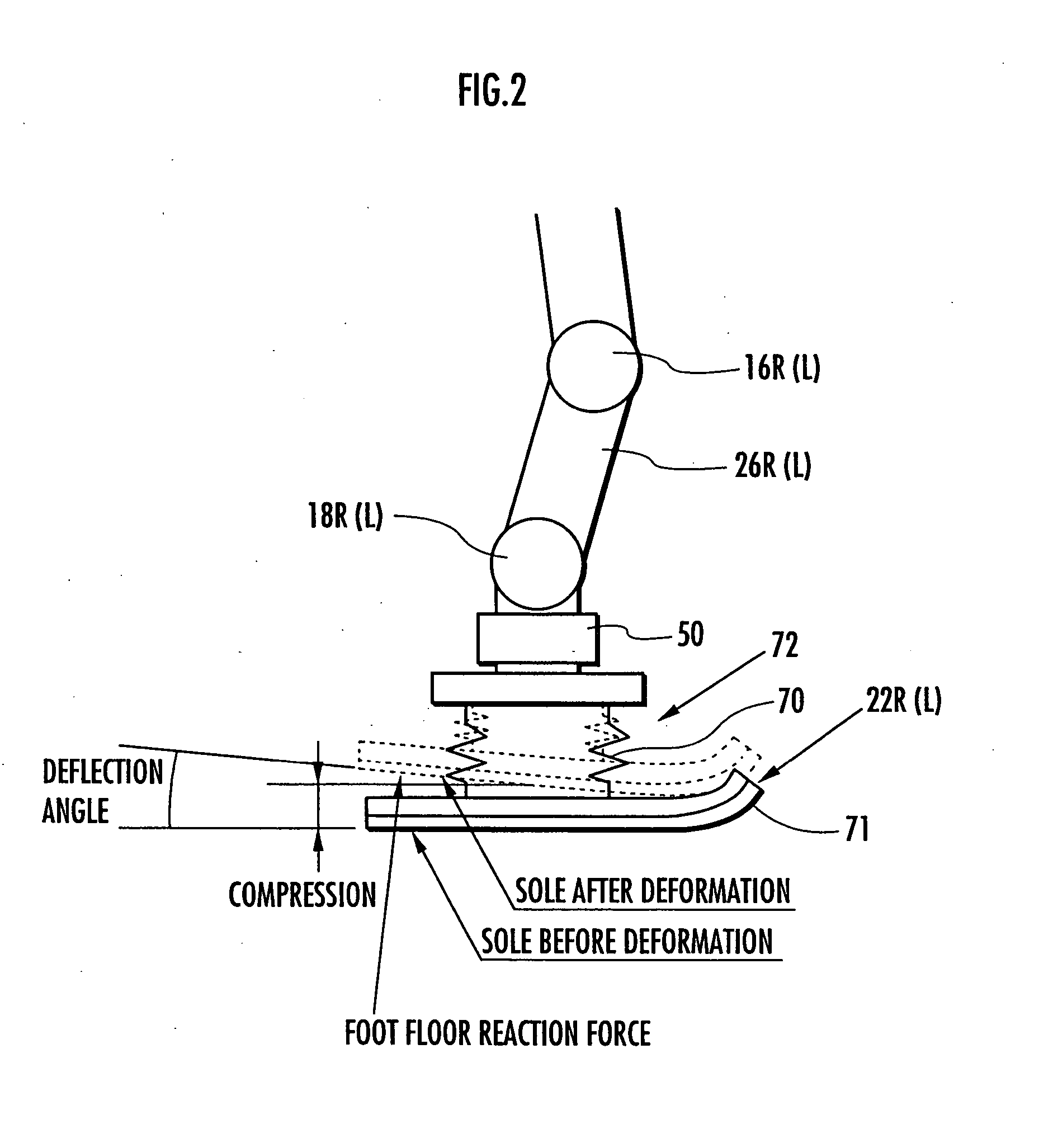Control device for legged mobile robot
a mobile robot and control device technology, applied in the direction of electric programme control, program control, instruments, etc., can solve the problems of not being able to clearly distinguish between walking and running, unable to prevent the robot from spinning and falling, and unable to prevent the robot from traveling in the direction of walking and falling. , to prevent the robot from falling and falling, prevent the robot from traveling in the direction of walking and falling, and prevent the effect of sustained stability of the posture of the robo
- Summary
- Abstract
- Description
- Claims
- Application Information
AI Technical Summary
Benefits of technology
Problems solved by technology
Method used
Image
Examples
first embodiment
[0386] The reference example of the present invention does not use a linear dynamic model with three mass points used in PCT Kokai publication WO / 02 / 40224. Nevertheless, the concept of the divergent component and a convergent component defined by the equation given below can be applied with adequate approximate accuracy to a perturbation of a behavior of a nonlinear dynamic model such as the one shown in FIG. 12.
Divergent component=Body mass point horizontal position+Body mass point horizontal velocity / ω0 Equation 10
Convergent component=Body mass point horizontal position−Body mass point horizontal velocity / ω0′ Equation 11
[0387] where the body mass point horizontal position in this case indicates a body mass point horizontal position Xb in the dynamic model shown in FIG. 12.
[0388]ω0 and ω0′take predetermined values. The values of these ω0 and ω0′ are substantially the same, although they do not exactly coincide. Further, the values for generating walking gaits in PCT Kokai pub...
second embodiment
[0775] As it will be discussed hereinafter, a desired floor reaction force moment horizontal component for compliance control about a desired ZMP will be determined so as not to exceed a floor reaction force moment horizontal component permissible range also in a second embodiment and after.
[0776] Incidentally, the first to the sixth actions are the same arts disclosed in PCT / JP03 / 00435 previously proposed by the present applicant.
[0777] As a seventh action, a motion of a desired gait is generated such that a model manipulation floor reaction force moment vertical component is additionally produced about a desired ZMP, and the actual floor reaction force of the actual robot 1 is controlled by composite-compliance control to approximate to a desired value, the desired value being obtained by adding the compensating total floor reaction force moment vertical component Mdmdz to a desired floor reaction force moment vertical component that balances with the desired gait to which a mode...
third embodiment
[0866] The above is the outline of the processing in the gait generator 100 in the present embodiment (the third embodiment).
[0867] The processing of the gait generator 100 in the present embodiment will now be explained in detail. The gait generator 100 in the present embodiment carries out the processing shown in the flowchart of FIG. 65 to generate gaits.
[0868] First, the same processing as the processing from S3010 to S3028 of FIG. 56 explained in the aforesaid first embodiment is carried out in S3510 to S3528. The floor reaction force horizontal component permissible range for a current time gait determined in S608 of FIG. 39, which is the subroutine of S3026, and the floor reaction force moment vertical component permissible range determined in S610 require less strict consideration given to the limit of a frictional force than in the case of the aforementioned reference example, the first embodiment and the second embodiment, and may be set to ranges that exceed the limit of...
PUM
 Login to View More
Login to View More Abstract
Description
Claims
Application Information
 Login to View More
Login to View More - R&D
- Intellectual Property
- Life Sciences
- Materials
- Tech Scout
- Unparalleled Data Quality
- Higher Quality Content
- 60% Fewer Hallucinations
Browse by: Latest US Patents, China's latest patents, Technical Efficacy Thesaurus, Application Domain, Technology Topic, Popular Technical Reports.
© 2025 PatSnap. All rights reserved.Legal|Privacy policy|Modern Slavery Act Transparency Statement|Sitemap|About US| Contact US: help@patsnap.com



